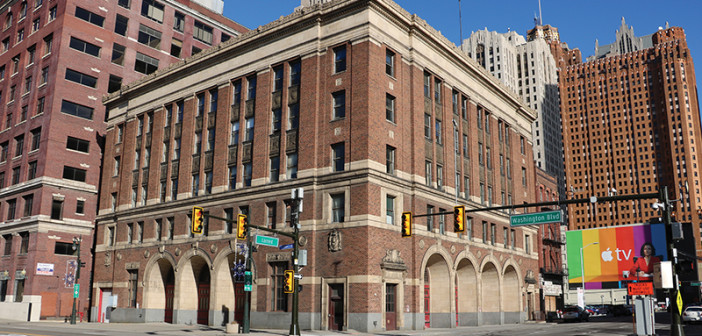NATIONAL REPORT—Everywhere you look these days, there are renovations of some form going on in the hospitality industry. It could be an existing hotel that needs to refresh its guestrooms and/or public spaces, or perhaps it’s a historic building that is being turned into a five-star luxury property. Just look at hotelbusiness.com and hotelbusinessdesign.com, and you will see a number of renovation news stories.
Detroit-based Sachse Construction, which has built and/or renovated hotels for the Courtyard by Marriott, Residence Inn and Hampton Inn brands, as well as a number of independents, is in the process of completing a $29-million renovation of a 1920s Detroit firehouse and a 19th-century building that will be turned into the 99-room Detroit Foundation Hotel. The property is expected to open later this year.
Todd Sachse, founder and CEO of the company, provided tips on how to tackle the renovation of an old, historic building, but some of them can be followed for any hotel renovation.
The first thing to do when starting the remodeling process, Sachse noted, is to determine if there is any asbestos or hazardous materials present.
“There are qualified firms that specialize in this type of assessment, and they create a detailed report outlining the precise location and quantity of these types of material,” he said. “We would then perform a top-to-bottom assessment ourselves, walking through the entire property to determine the structural integrity of the building and to decide which elements of the building—unique architectural details or artifacts—the building owner wants to preserve.”
He continued, “If there are historic tax credits that apply to the project, it’s important to work with those municipalities or governing bodies to know what steps and requirements you must take in order to obtain the credit.”
In an adaptive-reuse project such as the Detroit Foundation Hotel, there are two major areas of concern. “The first of these is the integrity of the mechanical, electrical and plumbing [MEP] systems because what is currently in place or originally designed for the property may not be usable due to location, type of system or because they are no longer built to code. The other area of concern is structural because buildings are typically designed for a specific purpose. For example, when converting a historic office building into a hotel or apartment complex, the column spacing or ceiling heights may be incompatible for hospitality or multi-family use. This means that there would be significant structural changes required to accommodate the new use,” he said.
“This also brings the challenge of vertical transportation and penetration, meaning installing elevators and stairwells associated with proper egress and modern elevator systems,” he added. “Additionally, vertical penetration is accomplished by implementing new MEP systems from floor to floor, which can lead to structural and layout challenges.”
Besides the structural integrity to consider, there are also factors dealing with historic elements of the building that have to be assessed.
“When we are working on historic buildings, we always collaborate with a historic preservation expert to assess the building with us and chart the best possible course of action,” Sachse said. “Typically, we are not acting alone in our decision-making process, as we want to make sure we are preserving the integrity of the building, in terms of the history of how it came to be. We want to ensure that we follow all the rules and regulations of construction projects, while still observing the building’s key historic elements, like certain types of molding or stonework. Many historic districts have their own guidelines to preserve the era in which those buildings were originally constructed, so we want to be cognizant of that.”
Once it has been decided that the building will be renovated, a thorough, physical inspection of the state of the property should be done, noted the CEO. “This will include selective demolition to expose certain areas. During this process, we open up ceilings and existing mechanical shafts and carry out structural testing. You should do a detailed analysis of the roof system and roof structure to find out the condition of the roof and the structure underneath, to determine if there is any damage. If elevators will be installed with new elevator pits, it is essential to do soil borings to find out the condition of the area under the slabs or the basement. Throughout this inspection, you compare the intended-use floor plans and drawings the developer of the building is using to determine any conflicts. I would also suggest dimensional checks to verify that the dimensions of the drawings match the field dimensions, so that everything ultimately fits in the building,” he said.
When renovating an existing hotel, perhaps the most important thing besides cost is completing it without disruptions to a working property.
“Preparing for a project means having control over the information provided, and you should take every step possible to plan ahead,” said Sachse. “Then it’s a matter of revisiting the original plans so you can try to stay on target and achieve each step on time and within your budget. Communication is also critical to the renovation process. It’s important to make sure everyone—from the construction and contract team to the hotel owners and operators—is on the same page and effectively communicates each step.
“If the property is open to guests at the time of renovations, they will need to know the times at which construction is taking place and if any of the hotel amenities will be unavailable,” he continued. “In some cases, guests may be able to enjoy the amenities while construction is taking place. Projects may also be planned in phases—while one area of the hotel is undergoing renovations, another may be open. Once the first phase is complete, the next phase can begin, allowing for minimal disruptions to visiting guests.”
For Sachse Construction, there have been some challenges in repurposing the Detroit Foundation Hotel, most notably the combining of two historic buildings into one property.
“The older building had more wear and tear, which led us to remove all the floors and walls with deterioration and replace them,” said Sachse. “We were able to make the determination that this was the best course of action to preserve the most important elements of the building and include it in our plans in the early stages of the project.”
He continued, “That being said, usually the risks associated with historic or renovation projects are worth the reward. Oftentimes, these properties have character that would be challenging to replicate with new construction today. We also are in a unique position to preserve architectural integrity in cities with a rich history, shining a new light on century-old construction or architecture, and giving it a modern twist. While there may be limitations in terms of existing walls, floors or other structural elements, we’re also given an opportunity to think more creatively about how we can save those elements and refresh them to meet new demands. Historic renovations, in particular, are more of an art than a science, and the challenges allow us to approach projects in new and exciting ways.” HB



